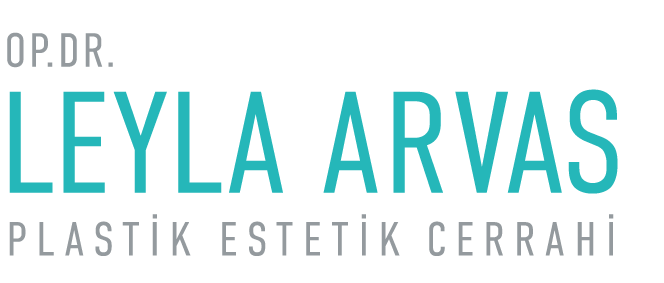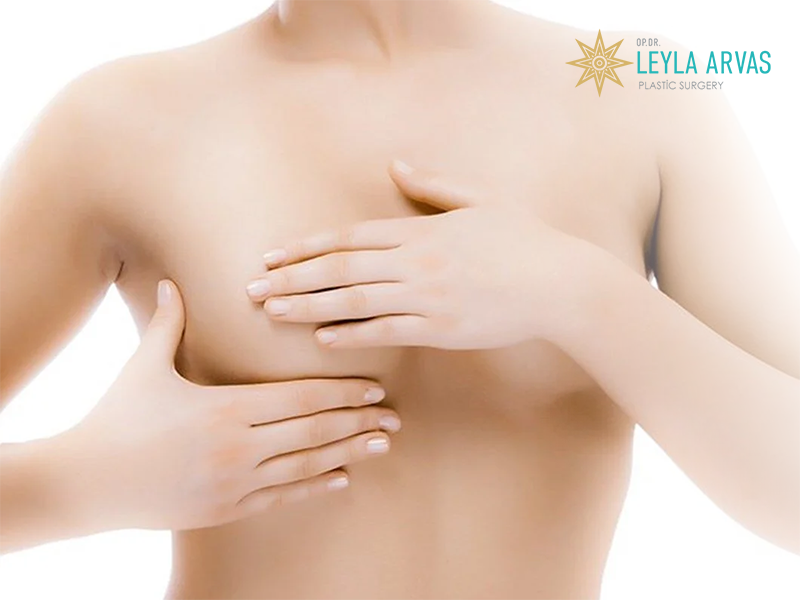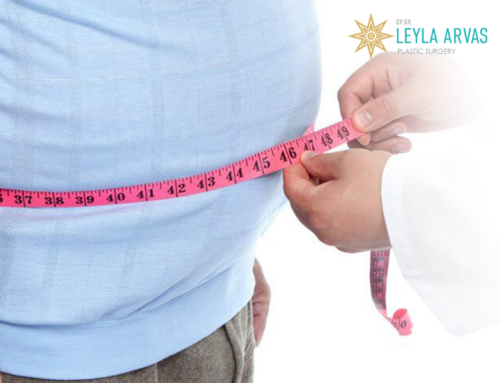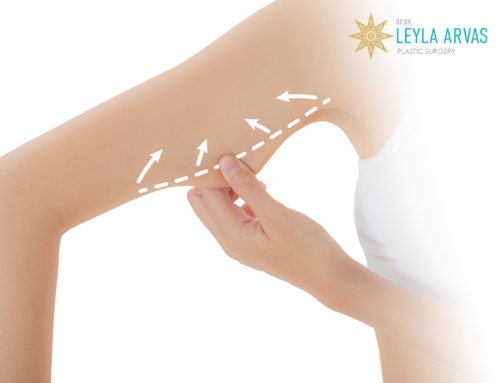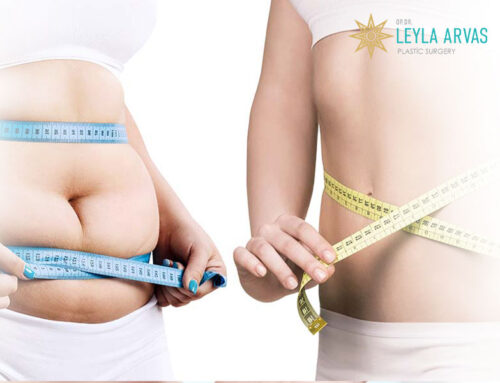[ez-toc]
The most common plastic surgery worldwide, including in Turkey, is breast augmentation. In essence, patients who want their breasts to alter to the desired shape and size use it.
Every woman aspires to have lovely breasts. Women may encounter challenging circumstances owing to abnormalities in one or both breasts as well as volume loss as a result of pregnancy-related weight increase, postpartum weight loss, and nursing. The goal of breast augmentation surgery is to achieve fuller, larger, and more visually pleasing breasts.
We decide which type of silicone will be preferred, whether or not to use fat injection instead of silicone, and all other details with the patient during the preoperative examination by evaluating the breast structure, skin consistency, desired size, and patient’s expectations. Then, we prepare for the procedure following our decision.
As a consequence, the patient’s desired form is achieved and the breasts grow fuller and more toned.
What’s Breast Augmentation?
The most common plastic surgery worldwide, including in Turkey, is breast augmentation. In essence, patients who want their breasts to alter to the desired shape and size use it.
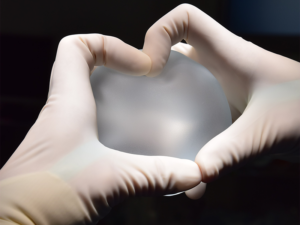
Breast augmentation is the name of the procedure in which specific-shaped and volume silicone implants are inserted in the breast region. As a consequence, the patient’s desired form is achieved and the breasts grow fuller and more toned.
Additionally, this procedure is highly beneficial for women who suffer breast sagging following childbirth, breast anatomical issues related to age, and breast loss due to breast cancer. Breast augmentation devices are inserted into the breast tissue or beneath the breast muscles.
How To Get Breast Augmentation?
During breast augmentation surgery, both inhalation anesthesia and intravenous sedation are used to put the patient to sleep. The surgeon marks the operative area before beginning the procedure. He next makes a passageway into the chosen anatomical pocket and enlarges it to the size needed for implant insertion. The surgical field is then stitched shut after an endoprosthesis is implanted in the created implantation zone.
The type of access used and the depth of installation determine the set of surgical procedures and techniques employed throughout the surgery. The procedure takes between 30 and an hour, and the woman goes home the next day.
Tests And Requirements For Breast Augmentation
The patient goes through a clinical assessment ahead of plastic surgery, which includes techniques for instruments and laboratory diagnostics. passes viral infection testing and, if required, has a mammogram. Ultrasonography and a Mammalogist consultation are required steps in the preparatory process for breast augmentation.
The fascia, the connective tissue covering the pectoralis major muscle, is located just underneath the gland. The initial implantation zone is above the fascia, where the implant is inserted via sub-glandular insertion. A second implantation pocket, known as subfascial, may develop underneath the fascia. Under the muscles is where the third implantation pocket is situated. It is utilized for submuscular or axillary implant insertion.
The focus should be switched to the anatomy of the chest when discussing plastic surgery and augmentation mammoplasty. The mammary glands are superficially situated. They are made up of subcutaneous tissue that is fully grown and an exocrine gland. While adipose tissue is more developed in some, glandular tissue predominates in others. With aging, tissues alter in composition, and body weight also has an impact.
Which Type Of Implant Is The Best For Breast Augmentation?
The form, height, lower segment breadth, and other parameters of silicone implants vary. Anatomical implants have an expanded bottom pole and are teardrop-shaped. The form of round implants is that of a typical hemisphere. Another crucial element that you may use to simulate the chest’s curves and lessen the severity of the chest gap is the base’s breadth. The appearance of the breast is influenced by the implant’s profile. High-profile implants provide the appearance of a larger bust when the volume is the same.
In the past, breast augmentation procedures employed saline implants, which are silicone capsules filled with saline. Saline implants are no longer often used, and in the top clinics, they are no longer even available. Implants made of silicone polymer took their place. They are extremely robust and have form memory. Manufacturers provide lifetime warranties on their goods.
How To Choose The Best Implant For Me?
Numerous physical characteristics of the figure must be taken into consideration while selecting an implant. The patient’s age, body weight, chest breadth, number of glands, subcutaneous tissue development, and breast size are all important factors. It is preferable to insert anatomical implants with a wide base when there is a significant initial gap between the glands. A lady should choose round implants if she wishes to flesh up her décolleté.
Care should be used while selecting the implant volume. A 1.5–2 size increase in breast size is not recommended for middle-aged women who are beginning to show indications of skin elasticity loss because heavier implants might hasten the onset of Masto ptosis. For thin girls, a drastic enlargement in the breast is not advised.
It is crucial to realize that the primary objective of the procedure is to enhance the breast’s aesthetics over a long period, and for this, many different aspects must be taken into consideration. Computer simulation provides a sense of the immediate outcome. Only a plastic surgeon with extensive expertise and strong qualifications will be able to deliver an attractive outcome that will satisfy the patient for years.
Details Of Getting Good Breast Augmentation
The selection of the implant pocket affects both the immediate and long-term cosmetic value of breast augmentation. We would like to remind you that the main objective is to enhance the breast’s attractiveness for a long time, and the depth of the implant should be compatible with this objective.
Only with strong subcutaneous adipose tissue growth is it feasible to place an implant under the gland. Placement in two planes with the top section of the implant under the muscle and the lower portion covered by the gland is a common mixed option.
The accepted ideal configuration is the mixed layout. This positioning lessens the strain on the ligamentous system and, over time, lessens the long-term effects of age-related Masto ptosis. reduces the possibility of capsular contracture. The implant cannot be identified by probing or “by sight.”
Methods For Breast Augmentation
Implants can be installed by three different methods of access: around the areola, in the fold under the gland, and the axillary fossa. Evaluate the benefits and drawbacks of each approach.
The incisions go around the areolas when using a peri-areolar technique. Since the installation is carried out through the gland, there is a chance that its ducts may be harmed. Women who intend to become pregnant and nurse their children should not have this kind of access. The benefit of the periareolar approach is that the scar is nearly undetectable and goes around the edge of the pigmented region.
Skin incisions are performed in the fold located beneath the breast gland when submammary access is used. The gland remains unaffected by surgery. While there is little chance of harming the milk ducts, you can touch the nerve that controls the nipple and areola’s sensitivity. Subtle gland tissue covers the scar. Advantage: The possibility to insert implants into any anatomical pocket and augment the breast by two sizes (or more).
Axillary access prevents the scars from detracting from the appearance of the bust since they are buried under the armpit. To get a stable cosmetic outcome, the implant is positioned in the axillary pocket. Endoscopic tools are used to regulate how the procedure is carried out. Minimal tissue damage, and rapid healing.
The surgeon considers the unique characteristics of the patient while deciding on access. Each approach has drawbacks, and which is best in a given situation depends on a person’s unique traits. Due to the intricacy of the technique, trans-axillary access surgery is a little more costly.
Candidates For Breast Augmentation
Every patient of a plastic surgeon has unique motivations, goals, and intentions. They all have the same determination to improve their lives. become more attractive, younger, and sexier. Medical considerations are not used to justify breast augmentation or the treatment of aesthetic flaws that were either acquired or gifted by nature. A woman’s desire to show and enhance attractiveness while preserving a strong sense of individuality is the most obvious aesthetic indicator.
There are different kinds of surgical indications for aesthetic reasons. Patients with naturally tiny breasts, size 0 or 0.5, fall into one of these groups. Postpartum involution might lead to a decline in breast attractiveness. Stretch marks and sagging of the bust are caused by an expansion in the mammary glands during breastfeeding and a subsequent reduction in volume. Breast augmentation gives a ready-made answer to this issue because no one wants to deal with such aesthetic flaws at a young age.
With the aid of augmentation, it is also possible to address the issue of age-related involution of the breasts, which is brought on by a decrease in the volume of glandular tissue.
What To Expect From Having Breast Augmentation?
To give the breast the required shape, the doctor will make an incision in the right location, create a customized capsule, and carefully install breast implants. Correction, raising, or nipple plastic surgery may be performed concurrently with complicated interventions. The surgeon closes the wounds with stitches and a sterile bandage after finishing the maneuvers. The patient is moved to the recovery room while wearing specialized compression underwear.
The patient is at the hospital for the first day under the care of medical professionals, following which she is free to go. Although bed rest is not required, you must avoid making rapid hand movements in the first few days as this might displace the implant. You must adhere to limits on physical activity, sleep exclusively on your back, and avoid using the sauna and solarium over the next weeks. The doctor will go into further detail about the limitations and will also give you a memo on how to behave following an arthroplasty.
Pros And Cons Of Breast Augmentation
The procedure dramatically alters a woman’s body and breast look. The outcome is instantly apparent, and as the tissue recovers, improvements become increasingly clear. Plastic surgery can simultaneously enhance the breasts’ size by many sizes and remove any asymmetry. It is possible to alter the bust’s form and rectify cosmetic flaws, whether they were there at birth or appeared as a result of aging or postnatal changes.
The sole drawback of breast augmentation with implants is that the procedure does not reverse the body’s natural aging process. The volume of natural tissues shrinks over time, altering the breast’s size and contour. A reduction in skin turgor causes mast ptosis symptoms to manifest. Implantation does not confer protection from these alterations, but present science is unable to do this.
It is not permitted to engage in physical activity such as lifting heavy things, swimming, aerobics, going to the gym, dancing, or yoga classes. After roughly a month, there is a stringent prohibition on exercise, and after three months, all limitations are abolished. You shouldn’t go out in the sun during this period since UV rays make surgical scars more pigmented.
Is Breast Augmentation Painful?
Patients may endure occasional painful bouts or overall discomfort following breast augmentation. Sometimes, these signs last for several weeks.
The removal of pain is perhaps the most crucial element in enhancing patients’ capacity to recover following surgery. Some surgeons believe that good pain management is crucial during the initial stages of recovery. Individuals have a wide range of pain thresholds. Because they have considerably higher pain tolerance, women who have given birth often have less postoperative discomfort. Some individuals liken the discomfort they feel while recovering to nursing.
In particular, during the first 24 to 48 hours, surgeons advise patients to consistently take prescription painkillers every 4 to 6 hours. Ibuprofen, paracetamol, and Tylenol are often used by patients for 1-2 days. If a patient now has or has ever had, stomach, kidney, or liver issues, they should not use ibuprofen.
Does Breast Augmentation Leave Scars?
Breast augmentation scars are permanent, however, they often become better and disappear with time. Plastic surgeons take considerable care to conceal and minimize scars and sutures.
The surgeon makes an incision in one of the following locations to place the implants: around the nipple, under the arm, or on the underside of the breast in the submammary fold.
Under the breast, the inframammary incision leaves a hardly noticeable scar. Only the areolar border is incised during peri areolar surgery. The alterations in nipple feeling that might result from a periareolar incision can be problematic, but the scars are often hardly perceptible. When simultaneous abdominoplasty is performed, a transabdominal incision is made.
Large incisions are utilized while doing a reduction mammoplasty. Some incision lines may be concealed by the surgeon within the breast’s natural contours, while others will be visible on the breast’s surface. Fortunately, incisions can typically only be made in breast tissue that a bra can cover.
To prevent infection, patients should adhere to all postoperative instructions and keep an eye on the state of their sutures. Maintaining your incisions can shorten the healing process and lessen the visibility of scars. After around 10 days, the sutures are taken out.
How Long Should I Wear Garments After Breast Augmentation?
The key needs for a woman during the healing phase following breast augmentation are discipline and responsibility. It is crucial to go by the surgeon’s advice in its entirety, particularly on the use of compression gear and exercise.
For four weeks, compression garments should be worn nonstop, day and night. This time frame can be altered by the doctor, but you are unable to “cancel” the compression on your own. This easy step expedites the healing process and aids in stabilizing the implant as well as the new bust form. reduces pain and swelling.
Breast Augmentation Recovery Timeline
It’s crucial to realize that everyone recovers from breast augmentation differently and takes a different period.
There is a large variety of size options for breast implants. The length of the healing period may be influenced by the size of the implant. For instance, big implants might cause the skin to expand by increasing pressure on the pectoral muscle. This may mean that recovery time following breast augmentation will be a bit longer.
Depending on the patient’s lifestyle and cosmetic objectives, the placement of the breast implants can be either above or below the pectoral muscle. A skin incision is necessary for axillary (submuscular) insertion, which is more invasive since it also necessitates separating a piece of the pectoral muscle to create room for the implant. Women who want the most natural-looking results and who don’t routinely engage in activities that need a lot of upper body work are frequently advised to use this placement option.
When implants are inserted under a muscle during breast augmentation, the muscle might “trap” the implant and maintain its high position. It may take two to three months or longer to lower the implant.
In comparison to submuscular breast augmentation, the recovery period with sub-glandular breast augmentation is quicker (under the mammary gland). In the former, discomfort lasts 10–12 days, while it lasts for around 4 days in the former.
Healing from a mammoplasty will take some time, much like during the recovery phase following any procedure. The information on what to anticipate in the days, weeks, and months following surgery is provided here to help patients better plan for their recovery period. To reduce pain and hasten recovery, patients should strictly adhere to all postoperative recommendations.
First Week After Breast Augmentation
Early bleeding is possible over the first 24 hours. Ice packs can be used on the affected area to minimize swelling, and it’s best to avoid applying any heat to the chest during this period.
An inflammatory phase lasts for the first four days and is marked by pain, swelling, and discomfort. The bulk of medications are utilized during this time, therefore it’s important to regularly check your body temperature.
As the skin adjusts to the increased size of the breast and breast implants, a common side effect of breast augmentation is a tightness in the breast region.
Patients should wear a compression garment or a special surgical bra over dressings for the first two to three days following surgery. For the following several weeks after the bandages are taken off, a surgical bra is required.
If the surgeon permits, you can have a shower from days 4 to 10, but you must thoroughly dry the wounds and dressings afterward (use a hairdryer). You are not allowed to raise your hands over your head at this moment, therefore you cannot wash your hair.
An adverse effect of painkillers is the potential for constipation. The requirement for medicine tends to lessen during the day as pain levels decline. However, discomfort is often felt between the hours of 3 and 6 in the evening. When implants are inserted under the muscle, the discomfort is severe.
Bleeding or infection are both possible over the first seven to ten days. Following surgery, bruising and swelling are common, but they quickly go away.
15 Days After Breast Augmentation
For many weeks following surgery, patients are recommended to refrain from any intense activity, including heavy lifting. The usage of the lever for routine tasks, such as those necessary when eating, cleaning one’s teeth, or combing one’s hair, should be kept to a minimum.
It’s crucial to avoid taking any drugs or dietary supplements that can induce bleeding within two weeks before cosmetic surgery, such as aspirin, fish oil, and herbal supplements.
To keep your torso elevated while you sleep, tuck at least two or three soft pillows under your head and upper back. This aids in releasing pressure from the treatment area, which lowers pain and swelling. Stomach sleeping is not permitted.
It may take several weeks for patients to feel pain-free from the seat belt, so they should refrain from driving during that time. The risk of bleeding and infection declines from days 10 to 21. It is possible to increase physical activity and carry out easy lower-body exercises. The majority of the edema starts to go away. Pain occasionally occurs at night. There may be tingling in the nipple region as the nerves start to awaken.
How Much Does Breast Augmentation Cost In Turkey?
The price of breast augmentation in Turkey is unrelated to the amount of time the surgeon spends doing the procedure, the number of consumables or medications used the frequency of follow-up exams or the size of the implant. The manner of access, the type of implant, and its presence are the only factors that affect cost. Prices may vary in some circumstances, especially if the patient elects a sophisticated procedure. For instance, the placement of an implant often takes place concurrently with a breast lift or nipple shape adjustment.
We have properly estimated the cost of the intervention for you and included the most points feasible. Turnkey service means there are no additional fees; everything is included in the price. By appointment, the initial consultation is free. If you live in another city or are unable to visit the clinic for whatever reason, you can consult a doctor in person or through a video call.
Consult our doctor first if you wish to enlarge your breasts. You may schedule a free initial session by leaving a message on the internet or calling our assistance; this will help you understand the breast augmentation cost and your alternatives. To get more detailed information about breast augmentation prices and more, please call us at +90 212 241 46 24.
